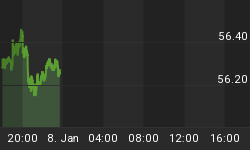In the Wall Street classic book "When to Sell," Justin Mamis observes, "Sometimes a particular statistic becomes so closely and publicly watched it can become a red herring; be cynical about something everyone is talking about." In my opinion, this is exactly what is happening right now as the Wall Street press is being very vocal about the high level of insider stock sales taking place in recent weeks.
According to one commentator, insider selling remains alarmingly the highest it has been in 17 years, with insiders selling $49.53 for every $1 they buy. The other oft-quoted statistic heard from the financial press is that the S&P is selling for 33 times trailing earnings, 19.5 times peak earnings, and yielding only 1.7%. Meanwhile, the P/E on the NASDAQ is 49.
These statistics on insider selling and investor sentiment have become a clarion call for the average investor to get out of the stock market. But you know what? I cant help thinking that this piece of data is nothing but a red herring to distract investors from what's really taking place underneath all the clack and clamor. And what I see taking shape is the makings of yet another upside leg in this nearly 8-month-old market rally, especially in the tech sector.
Speaking of tech sector, have you looked at a long-term chart of the NASDAQ Composite index lately? Whether it's a 1-year weekly chart (shown below) or a 3-year monthly chart, the outlook is pretty much the same -- bullish. Do you see how the 10/20/30-week moving averages are all humming along in near-linear fashion in unison? That's a positive signal that's hard to ignore. And once the NASDAQ breaks above the psychological 2000 barrier one can only imagine the money that will come pouring into the tech sector from all the sideline-sitters.

I'll tell you something else that's keeping rally hopes alive: the latest manifestation of extreme bearishness in the newspaper headlines! For instance, in a recent edition of the Financial Times newspaper the following editorial appeared, "Monster fears make markets wobble, but equity valuations are still a problem." The first sentence of this editorial reads, "The equity rally has begun to falter." That's really all you need to know. When a major newspaper uses the word "fear" in a headline about the stock market and goes on to talk about "excessive valuations" and "bubbles" you know this market isn't going to crash anytime soon. Indeed, there is a certain contrarian bullishness underlying these popular sentiments.
On the same page of the weekend edition of the FT newspaper there appeared a letter to the editor, titled "Stock sell-offs by U.S. company directors set off warning signals of further market declines." The writer argued his case that the market is poised for a steep decline, perhaps even 20% or more, he said. Well that right there clinched it -- the market isn't going to decline 20% anytime soon. In fact, a series of new highs in the major indices may very well be in the making before the year is over!
Have you seen a chart of the Dow Jones Transportation Average (DJTA) lately? I've referred to this important market index in recent weeks and I continue to be impressed with its chart. The daily chart of the DJTA shows a decisively rising 30/60/90-day MA combo. Also, the Transports now appear to have established a new base of support above the 2900 level, which is bullish. As long as the DJTA is in a bullish position like it is now the market has no major worries.

We've been bullish overall since late last March, and correctly so. It's safe to say the short-term trend for stocks remains up. And since this rally is almost eight months old, it's probably safe to call it an intermediate-term bull market. But what about the long-term (which I define as at least one year or longer)? Is it possible we've begun a long-term bull market? Yes, quite possible. Based on my work this will be confirmed if the Dow makes it decisively above the 10,000 level. (Incidentally, this is where the previous two dominant interim cycles failed, so making it above 10,000 would be extremely pivotal, not to mention impressive.)
To that end, if we get above 10,000 in the Dow I'm thinking about changing the name of my newsletter from "Bear Market Report" to something along the lines of "Momentum Strategies" (a title I think comes closer to describing our focus here, namely, capturing short-term and intermediate-term profits using momentum-based indicators such as moving averages, trend lines, and parabolic analysis).
The implications of a long-term bull market being confirmed before the end of this year are mind-boggling! Imagine the shockwaves that would reverberate through Wall Street, especially among the investment advisories! It would obviously catch many people completely off guard. And based on my work, the rising trend in stocks would coincide with a continued rising tide for gold and other commodities, and even (for a time) rising interest rates! Don't ask me to explain how all three asset categories can rise at the same time for relatively long periods, for I acknowledge that it defies the "normal" inter-market correlation. But that's exactly what the charts are telling me now. So my advice is to expect the unexpected!
















